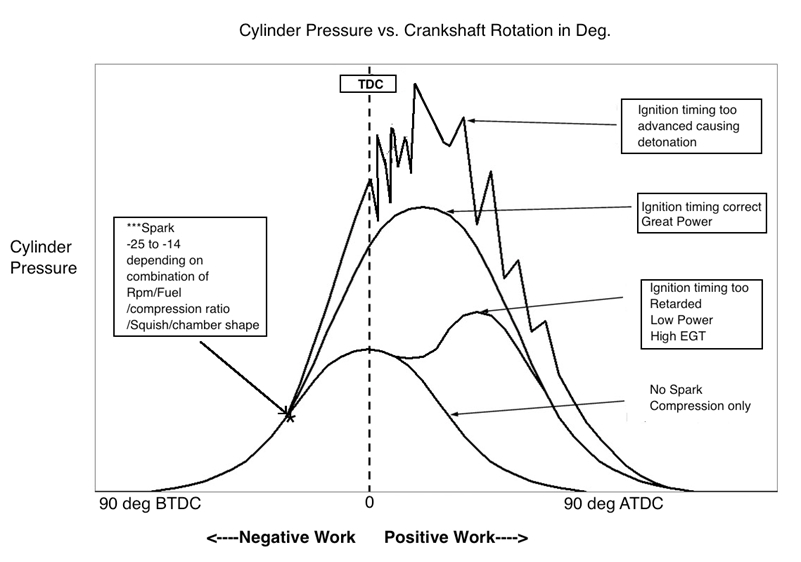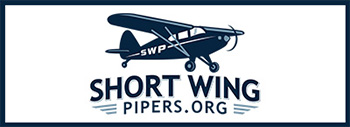Welcome! Becoming a registered user of ShortWingPipers.Org is free and easy! Click the "Register" link found in the upper right hand corner of this screen. It's easy and you can then join the fun posting and learning about Short Wing Pipers!

Thanks:
0
-
-


 Re: EGT and CHT questions
Re: EGT and CHT questions
I don’t have an answer for your high CHT #4. Mine only get to 400 on hot day and really long climb at 80 mph. Climb at 90 or more they stay below 400.
I noticed that after replacing my Superior Millenium cylinders with Continental (ex ECI) my CHT’s are 40 to 50 degrees cooler. Better cooling was immediately noticeable with absolutely no change to the baffling. Going from the previous low compression to the high compression cylinders I expected hotter CHT’s due to the higher heat of compression.
I was pleasantly surprised with the lower temperatures.
Superior advertises SUPERIOR COOLIING. That’s not my experience.
From EI’s guide which has great info on cylinder temperatures. https://buy-ei.com/wp-content/upload...ots_Manual.pdf
Most carbureted engines have an EGT spread between hottest and coldest cylinders around 150F except as follows: O520 and O470 have EGT spreads around 200 0F or more.
* Most engines have a CHT spread between hottest and coldest cylinders around 65 0F.
My takeoff temperatures are spread much more than leaned in cruise
Recent EGT and CHT’s 1 thru 4 on a recent takeoff on my airplane. Due the construction of the Sutton exhaust the EGT probes on #1 and 2 are a slightly different length fron the exhaust port than 3 and 4.
1298 302 1228 289 1193 311 1189 310
Fuel flow on takeoff varies by temp and barometric pressure between 12.8 to 13.4 GPH.
I am running a modified (SB22) nozzle carb.
In cruise leaned at 75% power. 2525 RPM at 3000’
| 1384 |
329 |
1376 |
324 |
1347 |
325 |
1384 |
313 |
|
| 1387 |
329 |
1378 |
323 |
1347 |
325 |
1383 |
313 |
|
| 1394 |
329 |
1371 |
323 |
1347 |
325 |
1382 |
313 |
|
| 1392 |
327 |
1375 |
323 |
1348 |
325 |
1384 |
314 |
Last edited by Gilbert Pierce; 12-02-2019 at 11:47 AM.
-
 Re: EGT and CHT questions
Re: EGT and CHT questions
My ECI cylinder CHT's are similar to yours. I will exceed 400 degrees on 3 and 4 during climb out on summer days. I have 8.5 to 1 pistons and Sutton Exhaust. I replaced all my baffle which I went to great pains to seal and create good flow. The only noticable improvement I got is by blocking off some airflow to my rear mounted oil cooler. A factory rebuilt carburetor made little change. Cruising at 2350 to 2400 rpm mixture rich of peak I'll get my temps for 3 and 4 in the 390's. I have an 82 inch prop, I've just replace my skull cap spinner with a Catto carbon fiber spinner although, I don't expect much change in CHT's this summer. I never let my CHT's exceed 450 on climb which is the maximum temperature Lycoming wants. Best wear should be under 400. The only way I may be able to get lower temps is to steal Gilbert's CHT/EGT gauge. 
"You can only tie the record for flying low."
-
 Re: EGT and CHT questions
Re: EGT and CHT questions
Stealing mu UBG16 won’t do it as the same gage and probes were used on old and new cylinders. You’ll have to steal my cylinders.
However getting rid of those donuts you call tires, installing a prop that give you more than 80 miles per hour will probably increase the airflow over you cylinders.
-

 Re: EGT and CHT questions
Re: EGT and CHT questions
Thanks for the numbers, that gives me something to chew on...
I'm running dual Pmags, so I know my cruise CHTs are higher than they'd be on magnetos. I'm ok with that, I just want to make sure I can keep #3 CHT below 400 in normal cruise. I'm pretty close as-is, and I'm really happy with my cruise performance on the electronic ignitions.
I think I'm also going to pull my induction tubes again and try to straighten out some of the dings in the ends of them. I don't know that it'd make a ton of difference, but maybe it'd help my mixture distribution a little with less turbulence in some of them.
I'll try to pull that aft baffle section and do a mod like this:

source: http://www.vansairforce.com/communit...3&postcount=24
I think I might need more fuel... I don't notice a large CHT difference from full rich to where I was leaned before, but if I pull the red knob just a little past that I can get at least the #3 cylinder lean of peak. I've got some pictures flying around at 38x-33x-38x-38x that I'll put up here later. I'd fly around like that more often but in some conditions there's the slightest stumble so I richen back up to what I showed above.
Do my takeoff EGTs look high? No fuel flow meter yet, I'm still saving for the sensor.
Stephen, you joke about stealing Gilbert's gauges, but I moved from an EI CHT/EGT system to my new JPI engine monitor and I saw temperatures much higher than I previously did. Some of my CHT probes were loose in the wells though.
EDIT: added some clarifications.
Last edited by CamTom12; 12-02-2019 at 01:58 PM.
-
 Re: EGT and CHT questions
Re: EGT and CHT questions
Here some lean of peak operations. Just a hint of a stumble here.

-
 Re: EGT and CHT questions
Re: EGT and CHT questions
Interesting, electronic ignition and CHT increase. I have an ElectroAir ignition. Along with my big prop and beach ball tires. No one should get better air flow than CamTom's Racer. I've opened up my engine air out flow as much as possible without adding the Cub Crafter gills. We were all fine and dandy before we got all these fancy electronic engine monitoring gauges.
Hmmmm, Gilbert's cylinders....
"You can only tie the record for flying low."
-
 Re: EGT and CHT questions
Re: EGT and CHT questions
Part throttle mixtures are less dense than full throttle mixtures and burn slower. If we keep locked in to the WOT spark advance (fixed-timing magneto), peak pressure during part throttle operations will happen well after TDC, throwing wasted heat energy through the exhaust.
Pull that peak pressure left (with an electronic ignition like my Pmags and your ElectroAir) and you’ll get more work out of the same mixture, which results in lower EGTs and higher CHTs.
This graph is for WOT conditions, but the pictures are still applicable.

But yeah, I'm with you. I like being able to see all the numbers at once instead of having to click through each cylinder with my old stuff, but I miss not worrying about the high temps I was unknowingly flying with. It's a never-ending project, but at least its enjoyable.
-
 Re: EGT and CHT questions
Re: EGT and CHT questions
Great explanation. That and my higher compression pistons have the engine working at higher and hopefully more efficient internal temps. Thanks.
Now, if Gilbert would spend a few bucks on an electronic ignition, he could join our CHT range.
Last edited by Stephen; 12-02-2019 at 06:30 PM.
"You can only tie the record for flying low."
-
 Re: EGT and CHT questions
Re: EGT and CHT questions
I think your just showing off all those blanking plates........LOL....HA...HAHAHA
 Posting Permissions
Posting Permissions
- You may not post new threads
- You may not post replies
- You may not post attachments
- You may not edit your posts
-
Forum Rules


 Thanks:
Thanks:  Likes:
Likes: 





 Reply With Quote
Reply With Quote




